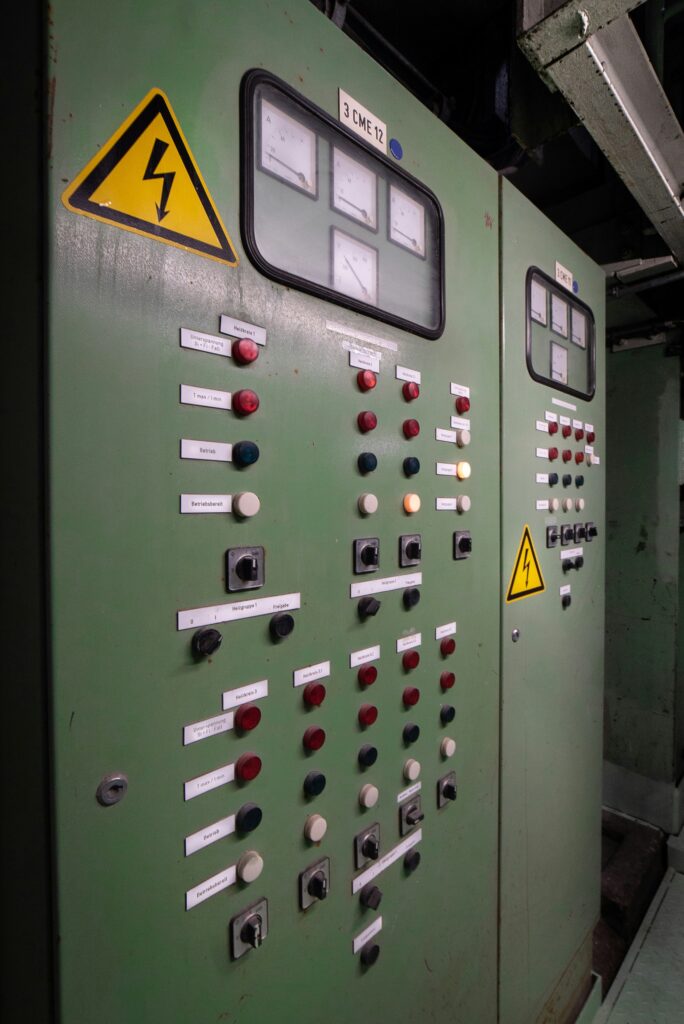Intro to Wastewater Treatment Plants
The most advanced wastewater treatment plant today reflects the pinnacle of decades-long evolution in technology and environmental science.
As environmental concerns escalate, the role of innovative wastewater treatment technologies becomes increasingly crucial in combating water pollution and preserving our natural ecosystems.
This guide delves into the sophisticated world of modern wastewater treatment plants, showcasing how these facilities are crucial to environmental conservation.
We will explore what makes a wastewater treatment plant advanced, including the key characteristics and technological innovations that set these facilities apart.
From state-of-the-art equipment supplied by leading water treatment plant equipment suppliers to the integration of electrical equipment essential for operations, this article highlights the complex machinery and cutting-edge technologies that define the world’s most advanced water pollution control plants.
Whether you’re a professional in the field or simply interested in the latest environmental technologies, this comprehensive overview offers valuable insights into the critical role and intricate workings of modern wastewater treatment plants.
What Makes a Wastewater Treatment Plant Advanced?
An advanced wastewater treatment plant embodies the forefront of technology and efficiency in managing and purifying water.
These facilities are distinguished by several key characteristics and innovations that not only ensure superior pollution control but also enhance sustainability and operational effectiveness.
Key Characteristics of Advanced Wastewater Treatment Plants
- Comprehensive Treatment Processes: Advanced plants employ a combination of physical, chemical, and biological processes to achieve a higher level of pollutant removal. This might include sophisticated methods like membrane filtration, advanced oxidation processes, and biological nutrient removal techniques.
- Energy Efficiency: These facilities are designed to minimize energy consumption. Innovations such as anaerobic digesters not only treat waste but also produce biogas, which can be used to generate electricity to power the plant.
- Automation and Smart Systems: Integration of advanced automation and control systems allows for real-time monitoring and precise control of treatment processes. This technology helps in maintaining consistent water quality and optimizing performance without constant manual intervention.
Technological Innovations That Set These Facilities Apart
- Membrane Bioreactors (MBRs): MBR technology combines conventional biological treatment with membrane filtration to provide a compact and highly effective wastewater treatment solution. This technology significantly improves the quality of the effluent, allowing for water reuse.
- Nutrient Recovery Systems: Advanced plants often include systems to recover nutrients like phosphorus and nitrogen, which can be harmful to aquatic ecosystems at high levels. Recovered nutrients can be repurposed as fertilizers, turning a waste product into a valuable resource.
- Artificial Intelligence and Machine Learning: Some of the most advanced plants now utilize AI to predict inflow and contaminant levels, adjust treatment processes in real-time, and manage the entire water treatment lifecycle more efficiently.
These technological advances not only enhance the capability of wastewater treatment plants to protect and improve water quality but also contribute significantly to environmental sustainability by reducing waste, recovering valuable resources, and cutting down on energy use.
As these technologies continue to evolve, they set new standards for what can be achieved in water pollution control and resource management in wastewater treatment facilities around the world.
Need help with Water Plant Engineering Services? Contact us for help!
Most Advanced Wastewater Treatment Plants Around the Globe

Around the globe, several wastewater treatment plants stand out for their advanced technologies and exceptional capabilities in pollution control.
These facilities set benchmarks in efficiency, innovation, and sustainability, showcasing how cutting-edge science and engineering can address pressing environmental challenges.
Examples of State-of-the-Art Wastewater Treatment Facilities
Stickney Water Reclamation Plant (Chicago, USA): This is one of the largest wastewater treatment facilities in the world.
It has implemented advanced processes such as thermal hydrolysis and anaerobic digestion, which not only treat wastewater but also convert waste into biogas that powers the plant, showcasing a stellar example of energy self-sufficiency.
NEWater Plant (Singapore): Renowned for its revolutionary approach to water reuse, the NEWater Plant uses dual-membrane (microfiltration and reverse osmosis) and ultraviolet technologies to treat wastewater to potable standards.
This plant significantly contributes to Singapore’s water independence, turning recycled water into a significant portion of the nation’s drinking water supply.
Brightwater Treatment Plant (Washington, USA): Employing membrane bioreactor (MBR) technology, this facility not only treats wastewater but does so with minimal environmental impact.
It features an environmental education and community center and uses reclaimed water for landscape irrigation on its property.
Western Treatment Plant (Melbourne, Australia): This facility combines advanced biological, chemical, and physical processes to treat wastewater effectively while also providing habitat for thousands of waterbirds.
It’s a leader in environmental management and uses constructed wetlands to further purify water and support biodiversity.
Highlight on Water Pollution Control Plant:
Geesinknorba Water Pollution Control Plant (Spain): This plant is distinguished for its innovative use of nano-coated membranes which enhance the efficiency of contaminant removal while reducing the energy consumption typically associated with such processes.
The technology not only ensures exceptional water quality but also sets new standards in sustainable water treatment.
These facilities demonstrate that through innovation and technology, wastewater treatment plants can transform from mere pollution control units to resource recovery facilities and vital components of urban water management systems.
Each of these plants contributes uniquely to setting global standards for environmental conservation, technological integration, and sustainability in water treatment.
Also Read: Our Guide to Valves and Pneumatic Systems
Critical Equipment in Modern Wastewater Treatment Plants

Modern wastewater treatment plants rely on a suite of critical equipment and advanced machinery to efficiently treat and manage wastewater. This equipment ranges from initial screening devices to sophisticated biological reactors and final filtration systems, all integral to the plant’s operation.
Overview of Essential Machinery and Tools Used in Advanced Plants
- Screens and Grit Removal: These are used at the very beginning of the wastewater treatment process to remove large solids and grit that could damage downstream equipment.
- Sedimentation Tanks: Employed to settle out solids by gravity, these tanks are crucial for reducing the load on more sensitive biological treatment stages.
- Bioreactors: Central to modern treatment facilities, bioreactors use microbial cultures to break down organic matter. Advanced versions include Membrane Bioreactors (MBRs) that integrate biological treatment with membrane filtration.
- Membrane Filtration Systems: Utilizing ultrafiltration or reverse osmosis, these systems produce high-quality effluent by physically removing contaminants from treated water.
- Disinfection Equipment: Typically involves ultraviolet (UV) light or chemical dosing systems such as chlorination to kill any remaining pathogens before the effluent is discharged or reused.
- Sludge Dewatering Equipment: Essential for reducing the volume of sludge produced during treatment, making it easier and more cost-effective to handle and dispose of or use.
Water Treatment Plant Equipment Suppliers
We have relationships with top suppliers across the globe. You can count on us to make sure the list is complete and accurate before shopping it around for the best price.
Electrical Equipment Used in Water Treatment Plants

Electrical equipment is the backbone of modern wastewater treatment plants, enabling precise control and efficient operation throughout the various stages of water treatment. Here’s a detailed look at the types of electrical equipment crucial for operation and how this equipment supports the process.
Types of Electrical Equipment in Wastewater Treatment Plants
- Pumps: Essential for moving wastewater through treatment processes, pumps are used at almost every stage, from initial intake to the discharge of treated water. They require robust motor controls to manage flow rates and pressures according to the needs of the treatment process.
- Blowers: Used primarily in aeration tanks, blowers supply air that helps maintain aerobic conditions necessary for the microbial digestion of pollutants. These are typically high-energy units that benefit from variable frequency drives (VFDs) to adjust air output as treatment demand changes.
- Motor Controls and Drives: These are used to regulate the speed and torque of electric motors that power pumps, blowers, and other mechanical equipment. VFDs are particularly important as they optimize energy use and control the mechanical operation precisely.
- Sensors and Meters: Critical for monitoring various parameters such as pH, dissolved oxygen levels, flow rates, and chemical dosages. Sensors ensure that the plant operates within required specifications and helps in automating adjustments to the treatment process.
- Control Panels and SCADA Systems: Supervisory Control and Data Acquisition (SCADA) systems integrate sensors and control outputs to automate the treatment processes. Control panels serve as the central point where plant operators can monitor and adjust the treatment process based on real-time data provided by SCADA systems.
- UV Disinfection Systems: These systems use ultraviolet light to kill pathogens before the treated water is discharged or reused. They rely on electrical control systems to ensure the UV lamps are operated at the correct intensities and durations to effectively neutralize bacteria and viruses.
Supporting Various Stages of Wastewater Treatment:
- In the pre-treatment stage, pumps and grinders powered by electric motors prepare incoming wastewater by removing large solids and conveying the influent to subsequent treatment stages.
- During the primary and secondary treatment stages, electrical equipment like mixers, aerators, and pumps are vital for facilitating the biological and chemical processes needed to remove organic matter and nutrients.
- In the tertiary treatment phase, advanced filtration systems such as reverse osmosis units, which are heavily dependent on precise electrical controls, remove remaining inorganic compounds and fine particulates.
- For disinfection and sludge treatment, electrically powered equipment like UV lights and sludge dewatering machines finalize the purification of the effluent and prepare byproducts for disposal or reuse.
The integration of these various pieces of electrical equipment into the wastewater treatment process ensures that plants operate efficiently, meet environmental compliance standards, and adapt to changes in load and treatment conditions dynamically.
Also Read: DeviceNet Vs. Ethernet for Industrial Use
The Role of Automation and AI in Wastewater Management
The field of wastewater treatment is continuously evolving, with new technologies emerging that enhance efficiency, reduce environmental impacts, and meet increasing regulatory demands.
Here’s an overview of the latest advancements and future trends in wastewater treatment technology that are set to redefine the industry.
Latest Advancements in Treatment Technology
Membrane Aerated Biofilm Reactor (MABR): This technology represents a significant shift in biological treatment, offering enhanced nutrient removal and energy efficiency.
MABR systems use gas-permeable membranes to deliver oxygen directly to biofilms that digest organic material. This method significantly reduces the energy required for aeration.
Nutrient Recovery Technologies: Innovations such as the Ostara’s Pearl® process allow for the recovery of phosphorus and nitrogen from wastewater streams, transforming these nutrients into a slow-release fertilizer.
This not only helps in reducing nutrient loads in effluent but also turns waste into a valuable product.
Advanced Oxidation Processes (AOPs): AOPs use combinations of oxidants and UV light to break down difficult-to-treat organic compounds and pathogens in wastewater.
This technology is particularly useful in treating industrial wastewater containing compounds that are resistant to conventional biological processes.
Digital Water Technologies: Incorporating artificial intelligence and machine learning, digital water technologies are becoming increasingly prominent in optimizing plant operations.
These technologies can predict inflow patterns, automate treatment processes, and enhance overall system efficiencies.
Future Trends in Wastewater Treatment
Energy-Neutral Wastewater Treatment Plants: Future advancements aim to make wastewater treatment plants energy neutral or even energy positive.
By harnessing technologies such as anaerobic digestion and by integrating renewable energy sources like solar and wind, plants could generate enough energy to power their operations and possibly provide excess energy back to the grid.
Nanotechnology in Wastewater Treatment: The use of nanomaterials in treating wastewater is a promising area of research.
Nanoparticles could be used to remove contaminants more efficiently than current methods by acting directly on molecular impurities or by enhancing the reactivity in chemical treatments.
Smart Wastewater Management Systems: Leveraging IoT (Internet of Things) technologies, future wastewater treatment systems will likely become increasingly automated and smart.
Sensors and networked technology will manage real-time data monitoring and process adjustments, ensuring optimal performance and rapid response to any system anomalies.
Decentralized and On-Site Wastewater Treatment: There is a growing trend towards smaller, decentralized treatment systems that treat waste close to where it is generated.
These systems reduce the need for extensive sewer networks and large centralized plants, offering a more sustainable and cost-effective solution, especially in rapidly urbanizing areas.
These innovations and trends not only aim to enhance the efficiency and sustainability of wastewater treatment processes but also address broader environmental challenges, such as resource recovery and reducing carbon footprints.
The future of wastewater treatment looks promising with these technologies leading the way to more intelligent, efficient, and environmentally friendly practices.
Environmental Impact and Sustainability Practices

Advanced wastewater treatment plants play a pivotal role in promoting environmental sustainability by implementing technologies and practices designed to minimize their ecological footprint.
These facilities are increasingly incorporating innovative methods to ensure that their operations contribute positively to the surrounding environment and support global sustainability goals.
How Advanced Treatment Plants Contribute to Sustainability
Resource Recovery: Modern wastewater treatment plants are not just about treating water but also about recovering resources. This includes the extraction of nutrients like phosphorus and nitrogen, which can be repurposed as agricultural fertilizers.
Additionally, the conversion of organic waste into biogas through anaerobic digestion processes allows plants to generate renewable energy that can power the facility and, in some cases, supply excess energy to the local grid.
Water Reuse: Through advanced purification technologies such as membrane filtration and advanced oxidation, wastewater can be treated to levels suitable for reuse in agricultural irrigation, industrial processes, and even as potable water.
This practice significantly reduces the demand on freshwater resources and helps in drought-prone areas.
Reduction of Greenhouse Gas Emissions: By optimizing energy usage and producing renewable energy, advanced treatment plants can reduce their reliance on fossil fuels. Techniques like anaerobic digestion lower methane emissions, a potent greenhouse gas, by capturing it and converting it into usable energy.
Methods Used to Minimize the Environmental Footprint of Wastewater Treatment:
Energy-Efficient Technologies: Implementation of energy-efficient technologies such as high-efficiency blowers, pumps, and energy recovery systems help reduce the overall energy consumption of wastewater treatment plants.
Variable frequency drives (VFDs) are also used to adjust the speed of motors based on demand, further enhancing energy efficiency.
Eco-friendly Chemical Use: Reducing the reliance on harsh chemical treatments by using more environmentally friendly alternatives or advanced physical and biological processes helps decrease the chemical footprint of wastewater treatment.
This includes shifting from chlorine-based disinfection methods to UV or ozone, which do not produce harmful byproducts.
Wetland Integration: Constructed wetlands are often used as a secondary treatment step, providing a natural way to further purify wastewater through the action of plants and microorganisms. These wetlands also create valuable habitats for wildlife and contribute to biodiversity.
Sediment and Erosion Control: Effective management of solids throughout the treatment process helps in reducing sediment and controlling erosion around the plant. This is crucial for protecting water bodies into which treated water is discharged.
Community and Ecosystem Engagement: Many advanced plants actively engage with the local community and environmental programs to promote water conservation, habitat restoration, and public education about sustainability practices.
Through these contributions and methods, advanced wastewater treatment plants are at the forefront of reducing the environmental impact of human activities while supporting ecological health and community well-being.
These efforts show a commitment to not only meeting today’s needs but also ensuring a sustainable water future.
Challenges Facing Advanced Wastewater Treatment Facilities
Advanced wastewater treatment facilities, despite their critical role in environmental management, face several significant challenges that can hinder their efficiency and effectiveness.
Understanding these obstacles and exploring strategies to overcome them is crucial for the continued success and improvement of these essential systems.
Common Challenges Facing Advanced Wastewater Treatment Facilities
Funding: Securing adequate funding for the construction, upgrading, and maintenance of advanced treatment facilities is a major challenge. The high costs associated with state-of-the-art technologies and infrastructure can be prohibitive for many municipalities and private entities.
Technological Integration: Integrating new technologies into existing wastewater treatment systems poses significant challenges, including technical compatibility issues, the need for operator training, and initial decreases in system efficiency as new processes are brought online.
Regulatory Compliance: Wastewater treatment plants must comply with increasingly stringent environmental regulations. Keeping up with these evolving standards requires continuous updates and modifications to treatment processes, which can be costly and complex.
Strategies for Overcoming These Challenges
Innovative Financing Solutions: Leveraging public-private partnerships, accessing green bonds, or seeking grants from environmental agencies can provide critical funding.
Additionally, facilities can implement cost-saving measures like energy recovery and resource selling (e.g., selling treated wastewater for industrial use or recovering nutrients for fertilizers) to offset operational costs.
Phased Technology Adoption: To ease the integration of new technologies, facilities can adopt a phased approach. Starting with pilot projects allows a facility to test and adapt new technologies on a small scale before full-scale implementation, reducing risks and allowing for staff training and system adjustments.
Active Regulatory Engagement: Facilities can benefit from actively engaging with regulatory bodies. By participating in the regulatory process, facilities can gain better insights into upcoming changes and advocate for practical compliance timelines.
Additionally, establishing compliance as a core operational principle can ensure more systematic and proactive updates to treatment processes.
Continuous Training and Development: Investing in ongoing staff training ensures that the workforce is skilled in the latest wastewater treatment technologies and practices. This not only improves operational efficiency but also enhances the facility’s ability to adapt to new technologies and processes.
Adopting Advanced Monitoring and Control Systems: Implementing sophisticated monitoring systems that provide real-time data on all aspects of the treatment process can help facilities anticipate and address issues before they become compliance risks or operational failures.
By addressing these challenges with strategic planning, innovative financing, and embracing technological advancements, advanced wastewater treatment facilities can continue to improve their efficiency and effectiveness, contributing to better environmental and public health outcomes.
Need help with Water Plant Engineering Services? Contact us for help!
Concluding our post on the Most Advanced Wastewater Treatment Plants
Advanced wastewater treatment technologies are pivotal in managing our planet’s water resources sustainably. These innovative solutions not only improve the quality of treated water but also enhance the efficiency and reliability of wastewater management systems.
By effectively removing pollutants, recovering resources, and generating energy, advanced facilities play a crucial role in reducing environmental impacts and supporting public health.
Looking forward, the global outlook for water treatment is geared towards further innovations and smarter, more sustainable practices. As population growth and urbanization increase pressure on water resources, the demand for advanced wastewater treatment will continue to rise.
The integration of AI and IoT technologies into these systems is expected to revolutionize treatment processes, making them more efficient and less resource-intensive.
With ongoing research and development, the future of wastewater treatment promises even greater advancements, ensuring cleaner water and a healthier environment for generations to come.

